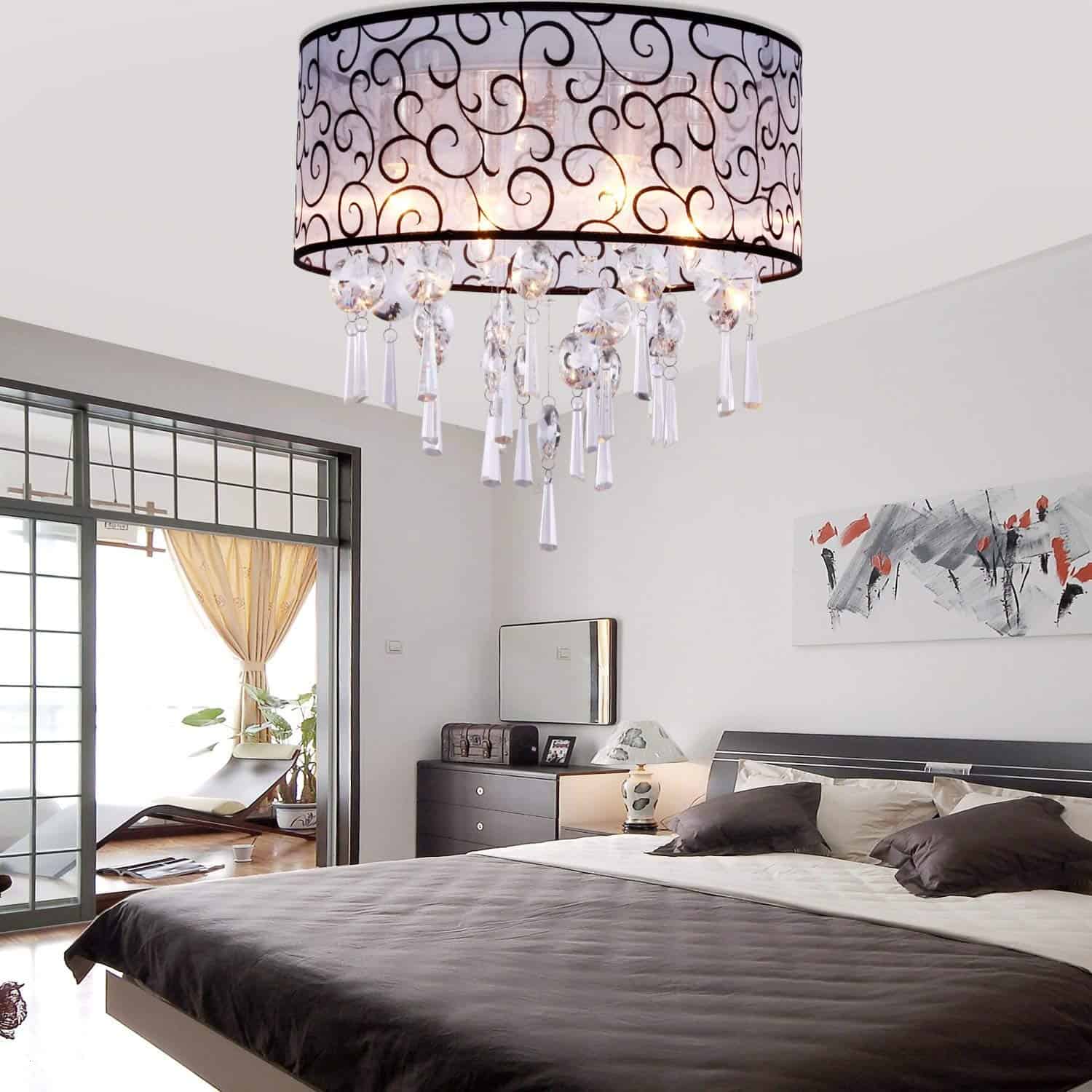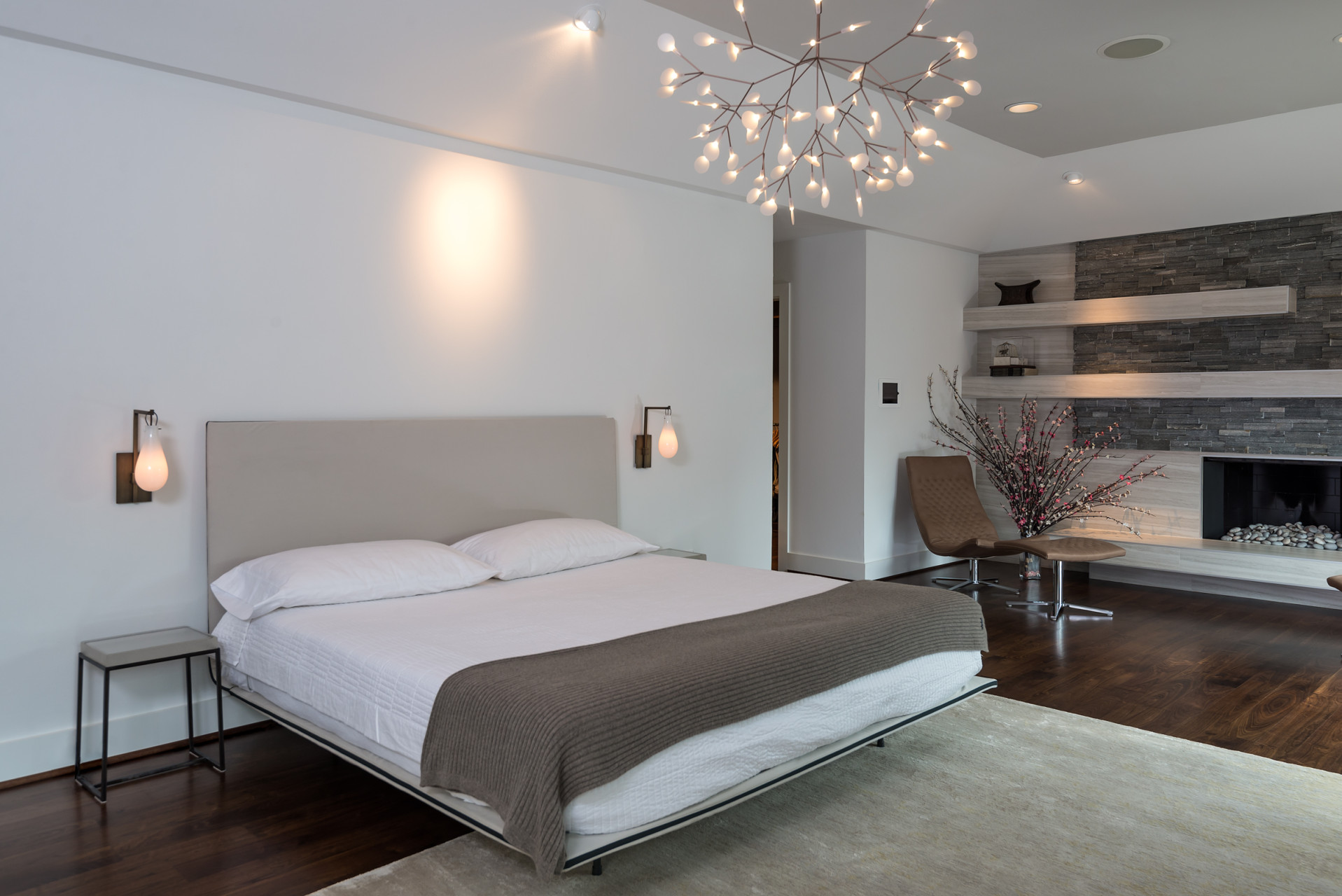Master Bedroom Lighting Essentials: Master Bedroom Light Fixture
:max_bytes(150000):strip_icc()/master-bedroom-lighting-ideas-4145021-hero-f2d0e160df2149dd969dd43d81827477.jpg)
The master bedroom is your sanctuary, a place to relax, unwind, and recharge. Proper lighting plays a crucial role in creating the right ambiance for sleep, relaxation, and even getting ready for the day. It can impact your mood, functionality, and the overall aesthetics of your space.
Choosing the Right Light Fixtures
Selecting the appropriate light fixtures for your master bedroom is key to achieving the desired ambiance and functionality. Consider the different areas within the bedroom and how you use them. For example, a reading nook requires focused task lighting, while a dressing area benefits from bright, even illumination. The bed itself should have soft, ambient lighting to create a relaxing atmosphere.
Master Bedroom Lighting Styles

The lighting in your master bedroom should complement the overall decor and ambiance you want to create. It’s not just about illuminating the space; it’s about setting the mood and enhancing the aesthetics.
Modern Lighting Styles
Modern lighting styles are characterized by clean lines, geometric shapes, and minimalist designs. They often incorporate materials like metal, glass, and acrylic. Popular examples include:
- Pendant lights with sleek, geometric shapes, such as spheres, cylinders, or squares.
- Linear track lighting that offers directional illumination and adds a contemporary touch.
- Wall sconces with minimalist designs and integrated LED strips for a modern edge.
Modern lighting often utilizes cool-toned white light, which creates a bright and energized atmosphere.
Traditional Lighting Styles
Traditional lighting styles evoke a sense of warmth, elegance, and sophistication. They often feature ornate designs, intricate details, and classic materials like brass, crystal, and wood. Popular examples include:
- Chandeliers with multiple arms and decorative elements, such as crystals or glass beads.
- Sconces with traditional motifs, like floral patterns or scrolled designs.
- Table lamps with classic shapes and elegant finishes, like polished brass or antique silver.
Traditional lighting typically uses warm-toned white light, which creates a cozy and inviting ambiance.
Farmhouse Lighting Styles
Farmhouse lighting styles are characterized by rustic charm and a touch of vintage appeal. They often incorporate natural materials like wood, metal, and linen. Popular examples include:
- Pendant lights with exposed bulbs and industrial-inspired designs.
- Wall sconces with distressed metal finishes and rustic accents.
- Table lamps with wooden bases and linen shades.
Farmhouse lighting often utilizes warm-toned white light or amber bulbs to create a warm and inviting atmosphere.
Minimalist Lighting Styles
Minimalist lighting styles prioritize simplicity, functionality, and clean lines. They often feature subtle designs and muted colors. Popular examples include:
- Recessed lighting that provides even illumination without any visible fixtures.
- Pendant lights with simple geometric shapes and minimal ornamentation.
- Wall sconces with integrated LED strips and sleek designs.
Minimalist lighting typically uses cool-toned white light to create a clean and uncluttered atmosphere.
Selecting Light Fixtures
When selecting light fixtures for your master bedroom, consider the following factors:
- Room size and layout: Choose fixtures that are appropriate for the size and shape of your bedroom. Avoid fixtures that are too large or too small for the space.
- Ceiling height: Consider the height of your ceiling when selecting pendant lights or chandeliers. Ensure the fixtures are not too low or too high for the space.
- Decor theme: Choose fixtures that complement the overall decor of your bedroom. For example, a modern bedroom would benefit from minimalist lighting fixtures, while a traditional bedroom might suit ornate chandeliers.
- Lighting needs: Consider the different lighting needs of your bedroom, such as ambient lighting, task lighting, and accent lighting. Choose fixtures that can provide the right type of light for each purpose.
- Budget: Set a budget for your lighting fixtures and choose options that fit within your price range.
Master Bedroom Lighting Techniques

Master bedroom lighting is more than just illuminating the space; it’s about creating a mood, enhancing the aesthetics, and promoting a restful environment. With careful planning and the right techniques, you can transform your master bedroom into a haven of comfort and style.
Creating a Relaxing Atmosphere
Achieving a calming ambiance in your master bedroom is crucial for restful sleep. Soft, warm lighting is key to creating a soothing atmosphere. Avoid harsh overhead lights that can be jarring and disruptive. Instead, opt for:
- Dimmable overhead lights: These allow you to adjust the brightness to suit your mood and the time of day. A dimmer switch lets you create a cozy and intimate setting in the evenings.
- Table lamps with warm-toned bulbs: Placing table lamps on bedside tables or dressers provides a soft, ambient glow, ideal for reading or relaxing before bed. Choose bulbs with a warm white or soft white color temperature for a relaxing feel.
- Recessed lighting with dimmers: Recessed lighting can provide general illumination while still creating a warm and inviting ambiance. Dimmers allow you to control the brightness for different activities and moods.
Highlighting Architectural Features
Lighting can accentuate the unique features of your master bedroom, adding depth and visual interest.
- Uplighting: Direct light upwards to highlight architectural details like vaulted ceilings, beams, or crown molding. This technique adds drama and dimension to the space.
- Wall sconces: Wall sconces placed strategically on either side of a bed or a fireplace can create a warm and inviting glow, highlighting the wall and adding a touch of elegance.
- Accent lighting: Use spotlights or track lighting to illuminate artwork, sculptures, or other decorative elements. This technique draws attention to these focal points and adds visual interest.
Providing Task Lighting
While creating a relaxing atmosphere is important, you also need functional lighting for tasks like reading, getting ready in the morning, or working from home.
- Bedside lamps with adjustable arms: These provide focused light for reading in bed without disturbing your partner. Look for lamps with adjustable arms to direct the light precisely where you need it.
- Vanity lighting: Proper lighting is essential for applying makeup or shaving. Consider using a combination of overhead lighting and vanity lights with adjustable bulbs to provide even illumination on your face.
- Under-cabinet lighting: If you have a desk or vanity in your bedroom, under-cabinet lighting can provide task lighting while keeping the overall atmosphere warm and inviting.
Using Dimmers, Smart Lighting Systems, and Layered Lighting, Master bedroom light fixture
Dimmers, smart lighting systems, and layered lighting offer versatility and adaptability in your master bedroom’s lighting scheme.
- Dimmers: Dimmers allow you to control the brightness of your lights, creating different moods and ambiances throughout the day. For example, you can dim the lights for a relaxing evening or brighten them for a more stimulating morning.
- Smart lighting systems: These systems allow you to control your lights remotely using your smartphone or voice commands. You can schedule lighting changes, adjust brightness, and even change the color temperature of your bulbs, creating a truly personalized lighting experience.
- Layered lighting: Combining different types of lighting creates a balanced and functional lighting scheme. This includes ambient lighting (general illumination), task lighting (focused light for specific activities), and accent lighting (highlighting specific features). Layering allows you to create a variety of moods and cater to different needs throughout the day.
Creating a Sense of Space, Depth, and Warmth
Strategic lighting placement can enhance the sense of space, depth, and warmth in your master bedroom.
- Use light to create a sense of space: Direct light towards the corners of the room to visually expand the space. Avoid placing lights directly in the center of the room, as this can make it feel smaller.
- Create depth with shadows: Use lighting to create shadows and highlights, adding depth and dimension to the room. For example, placing a table lamp behind a chair can create a dramatic shadow, adding interest to the space.
- Warm lighting for a cozy feel: Warm-toned bulbs (with a lower Kelvin temperature) create a cozy and inviting atmosphere. Avoid using cool white bulbs, as these can make the room feel sterile and cold.
Optimizing Light Fixture Placement and Direction
The placement and direction of your light fixtures play a crucial role in enhancing the beauty and functionality of your master bedroom.
- Consider the natural light: Take into account the amount of natural light that enters your bedroom when planning your lighting scheme. If your bedroom receives a lot of natural light, you may need less artificial light.
- Place lights strategically: Avoid placing lights directly above beds, as this can create glare and discomfort. Instead, consider using bedside lamps or wall sconces for reading light. Place overhead lights in the center of the room or off to the side, depending on the layout.
- Direct light towards focal points: Use lighting to draw attention to focal points in the room, such as a fireplace, artwork, or a beautiful view. This will enhance the overall aesthetics of the space.
